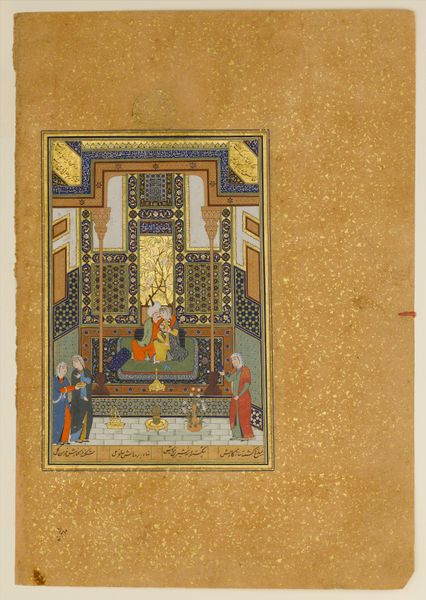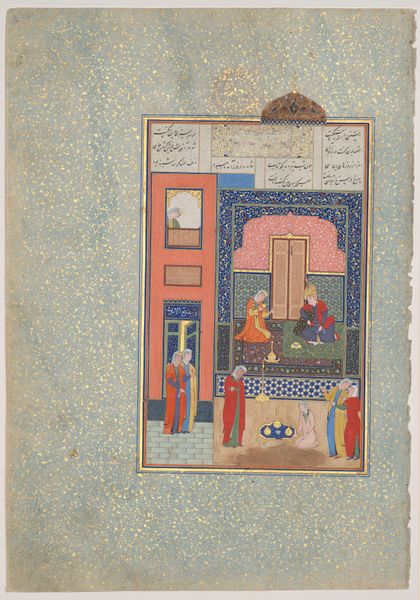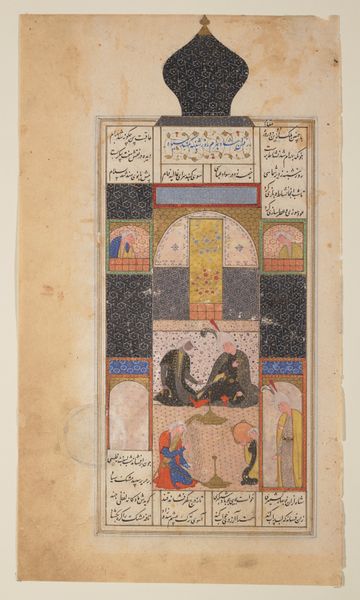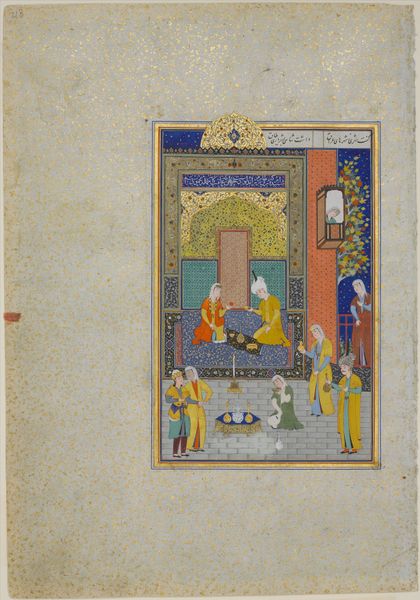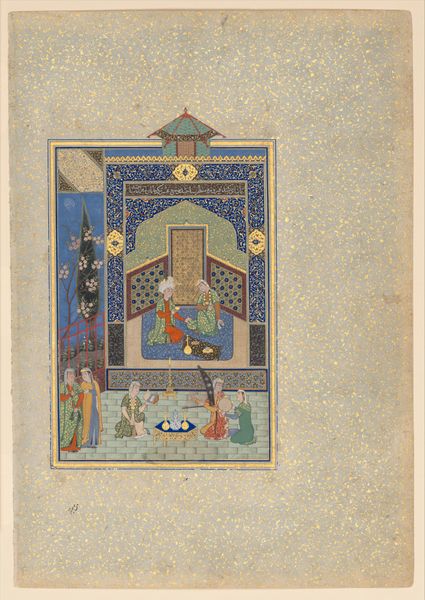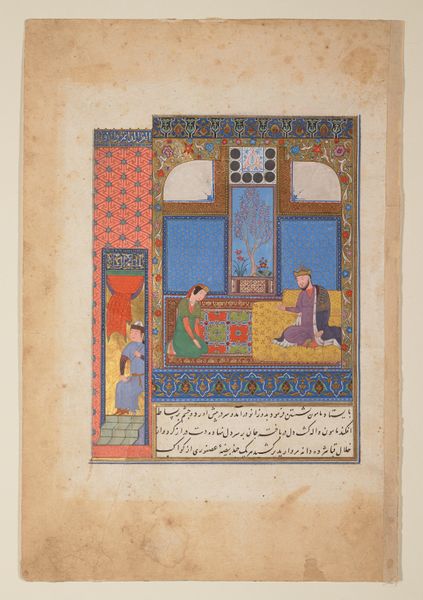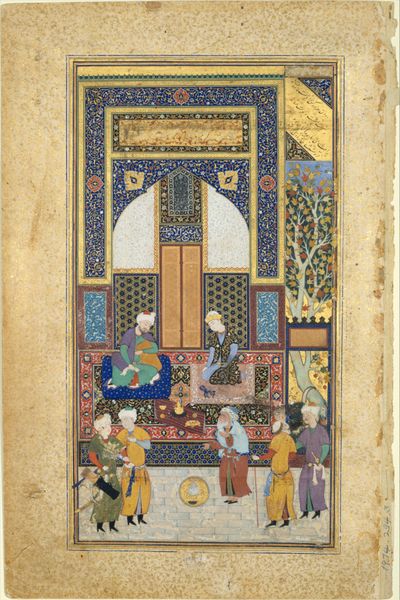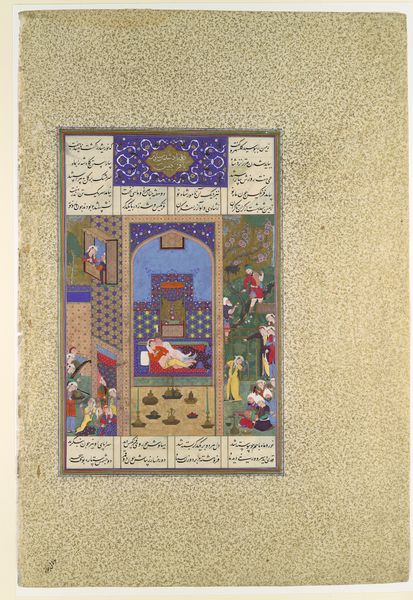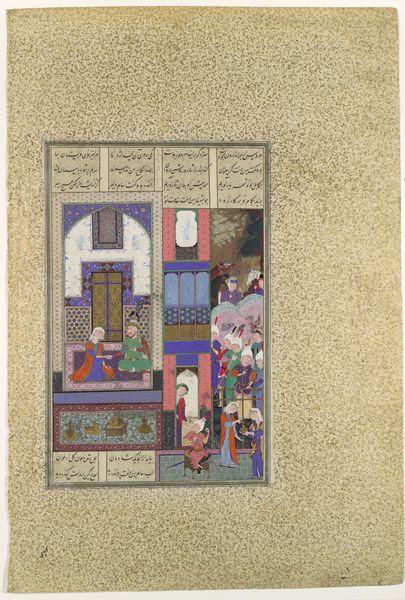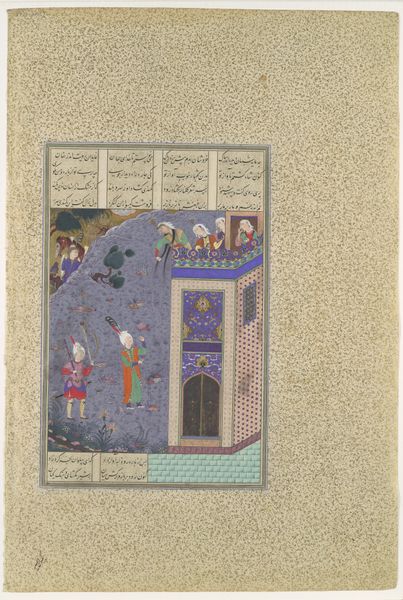
"Bahram Gur and the Indian Princess in the Dark Palace on Saturday", Folio 23v from a Haft Paikar (Seven Portraits) of the Khamsa (Quintet) of Nizami of Ganja 1405 - 1455
0:00
0:00
painting, watercolor
#
water colours
#
narrative-art
#
painting
#
watercolor
#
islamic-art
#
miniature
Dimensions: Painting: H. 8 1/2 in. (21.6 cm) W. 4 5/8 in. (11.7 cm) Page: H. 11 in. (27.9 cm) W. 7 1/4 in. (18.4 cm) Mat: H. 19 1/4 in. (48.9 cm) W. 14 1/4 in. (36.2 cm)
Copyright: Public Domain
This is a page from a manuscript of the Khamsa by Nizami of Ganja, dating back to the medieval period. It depicts "Bahram Gur and the Indian Princess in the Dark Palace on Saturday". The painting reflects the rich cultural exchanges of the time. We see Bahram Gur, an Iranian king, in conversation with an Indian princess, set within an architectural space that blends Persian and Indian design elements. This encounter isn't just a meeting of individuals, but a representation of interwoven histories and identities. The princess occupies a distinct space within the palace, suggesting her cultural identity is both preserved and integrated within the court. Servants attend to the couple, reinforcing social hierarchies while subtly acknowledging the contributions of labor and service to the courtly setting. The dark palace itself symbolizes the mysteries and complexities inherent in cultural exchange. The emotional depth of the piece draws on the intimate setting and invites us to consider the nuances of intercultural dialogue. The artwork prompts reflections on power dynamics, cultural identity, and the intimate spaces where diverse worlds meet.
Comments
No comments
Be the first to comment and join the conversation on the ultimate creative platform.


